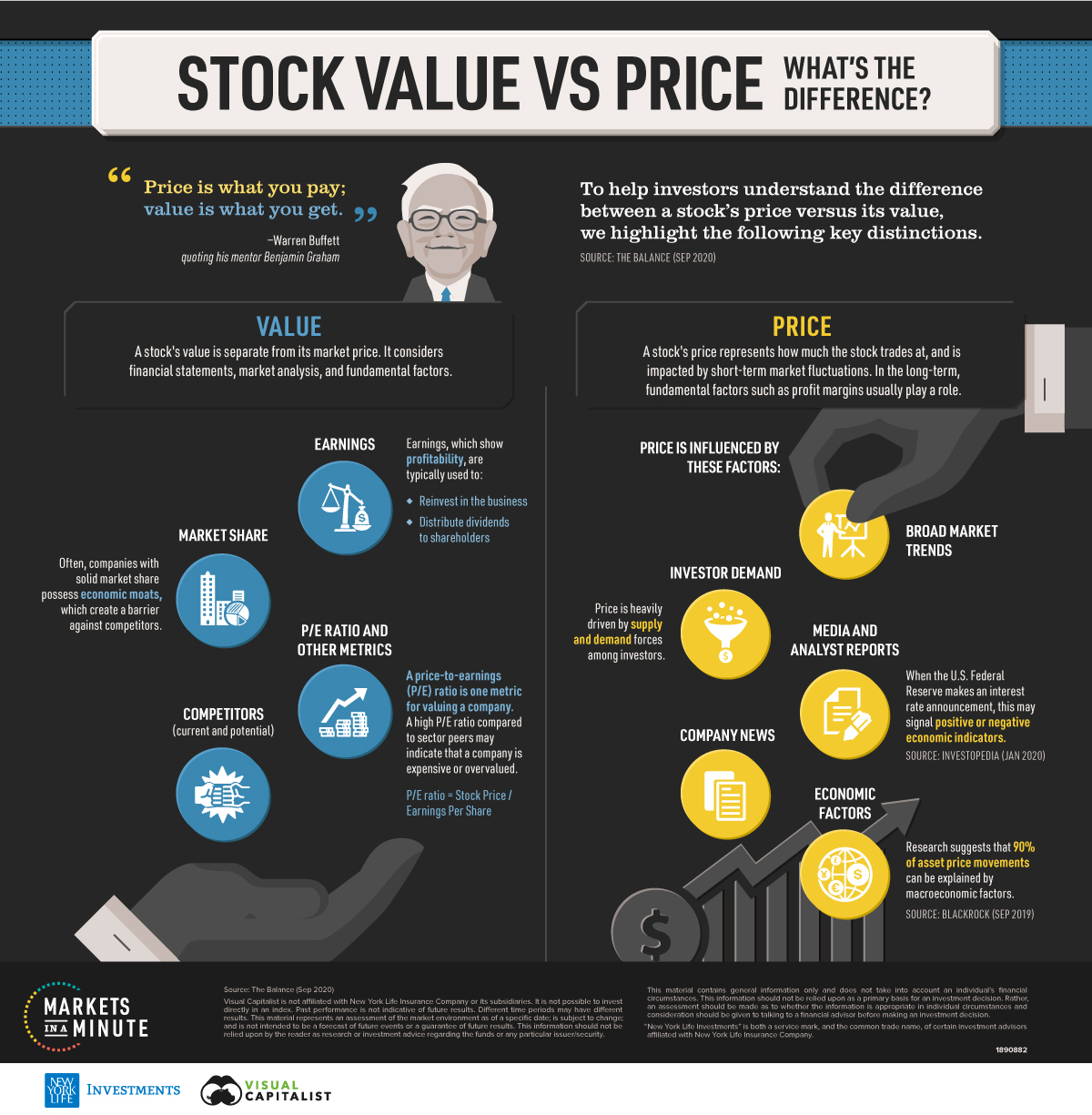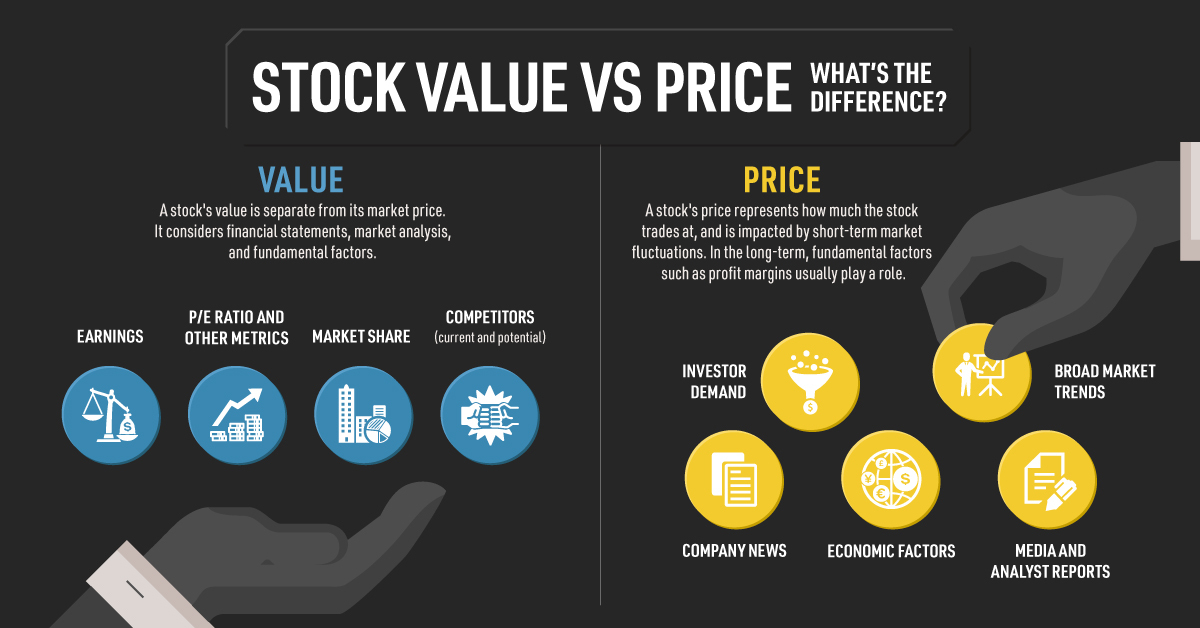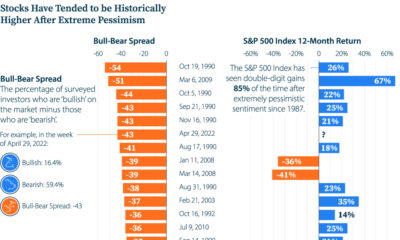This infographic is available as a poster.
Stock Value vs. Price: What’s the Difference?
From the Dutch Tulip Mania of the 17th century to the Roaring Twenties, asset bubbles have cropped up in markets persistently.
The recent activity in GameStop and other securities are no exception. But what does this mean for investors today? To answer this question, we return to a key principle of investing: the difference between a stock’s price versus its value.
This Markets in a Minute chart from New York Life Investments shows the key forces that impact both price and value to help investors harness a deeper understanding of their investments.
What Determines a Stock’s Value?
A company (represented by a stock) derives its value from fundamental factors including:
Earnings
Earnings, or profitability, is often an indicator of company performance. Past and present numbers indicate a company’s profitability thus far, while future earning projections help investors gauge potential performance going forward. This is germane to investors because a company will typically reinvest its earnings into the business or distribute them as dividends to investors.
Market Share
Companies with strong market share possess economic moats, which create a barrier against competitors. These moats can protect a company from new market entrants or allow for cost advantages, increasing the company’s value to investors.
P/E ratio and Other Metrics
The price-to-earnings (P/E) ratio is a common metric for valuing companies. It measures a company’s price in relation to its earnings per share (EPS). If a company has a low P/E ratio compared to its peers, this may suggest that it is undervalued.
Here are common metrics used to value a stock:
| Metric | Formula | Purpose |
| P/E ratio | Price/Earnings Per Share | Compares a company’s stock price relative to its earnings |
| P/B ratio | Price/Book Value Per Share | Compares a company’s stock price relative to its tangible net asset value |
| Debt-to-equity ratio | Total Liabilities/Total Shareholders’ Equity | Shows company leverage, or the extent that a company is financing operations through debt |
Competitors (Current and Potential)
Comparing a company against its peers can indicate its relative strength. An investor may discover value discrepancies between competitors, presenting potential investment opportunities.
What Determines a Stock’s Price?
A stock’s price, on the other hand, is typically influenced by a separate set of factors:
Investor Demand
Supply and demand is central to determining the price of a stock. When an influx of market participants are buying a stock, the market price will rise. If the number of sellers for a stock exceeds the number of buyers, the price may drop.
Broad Market Trends
Bull and bear markets are examples of primary markets, which may influence a stock’s price performance. Rallies or directional turnarounds are other types of shorter market trends which often last between two to eight weeks.
Media and Analyst Reports
When a company faces a controversy, media reports may influence investor behavior, causing them to sell. Conversely, a strong analyst rating may influence investors to buy.
Economic Factors
Across asset classes, six macroeconomic factors have been shown to explain 90% of a stock price’s movements: real rates, economic growth, liquidity, inflation, emerging markets, and credit.
Company News
When a company releases quarterly earnings reports, it may influence investor demand. If Apple’s company’s earnings exceed expectations, for instance, its stock price may consequently rise after the announcement.
In the short term, many of the variables that influence a stock’s price are driven by external forces. But in the long term, fundamental factors such as profit margins or earnings, often play a bigger role.
Forest For the Trees
With the above factors in mind, investors are better equipped to recognize the driving forces that underscore a stock’s price and value, especially in the face of volatility and market exuberance.
By knowing these core differences, investors will not only get a better awareness of their portfolios, but will learn how to make more rational investment decisions.




 Infographics2 years ago
Infographics2 years ago
 Markets in a Minute2 years ago
Markets in a Minute2 years ago
 Markets in a Minute2 years ago
Markets in a Minute2 years ago
 Infographics2 years ago
Infographics2 years ago
 Markets in a Minute1 year ago
Markets in a Minute1 year ago
 Infographics3 years ago
Infographics3 years ago
 Markets in a Minute2 years ago
Markets in a Minute2 years ago
 Infographics1 year ago
Infographics1 year ago












